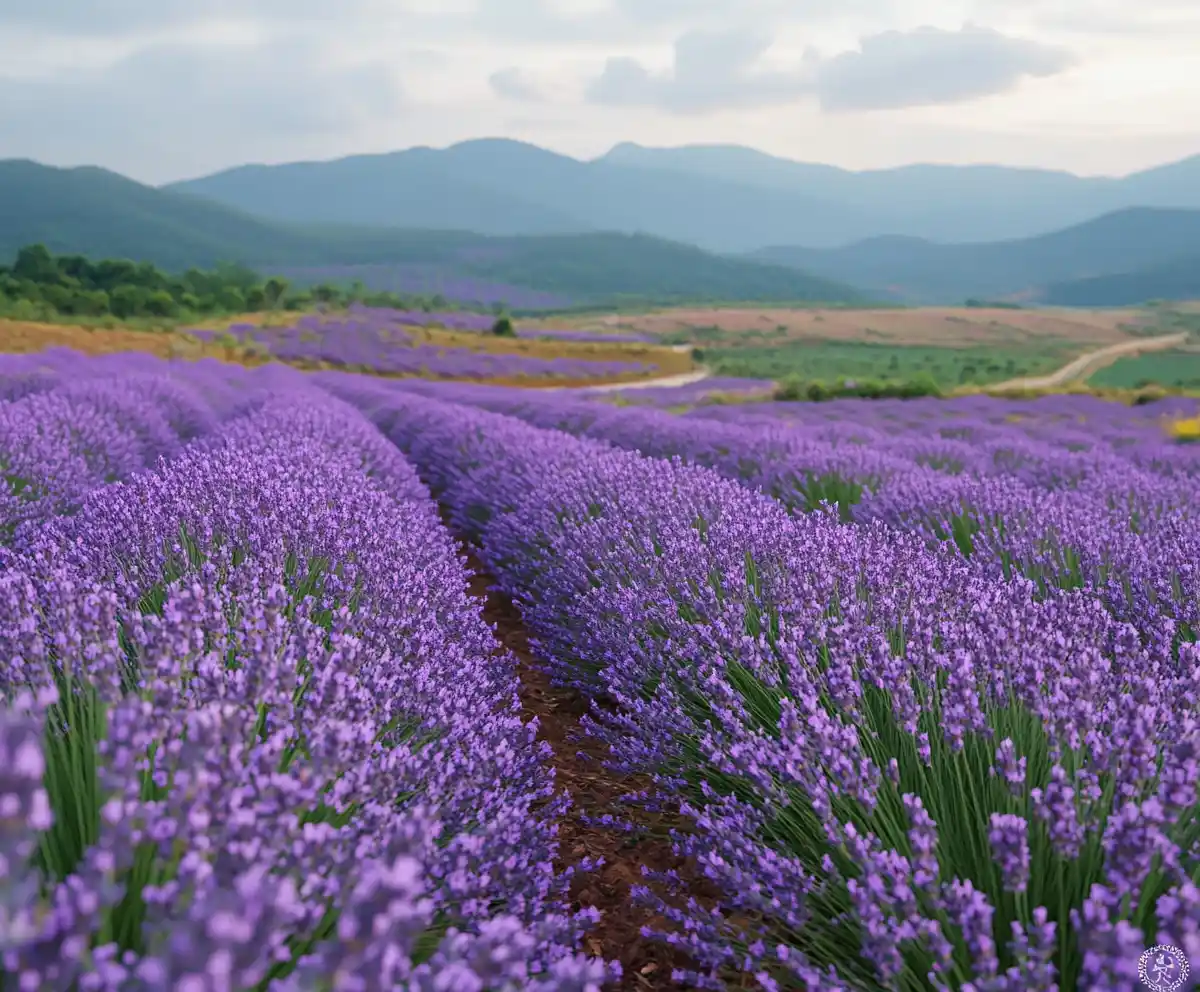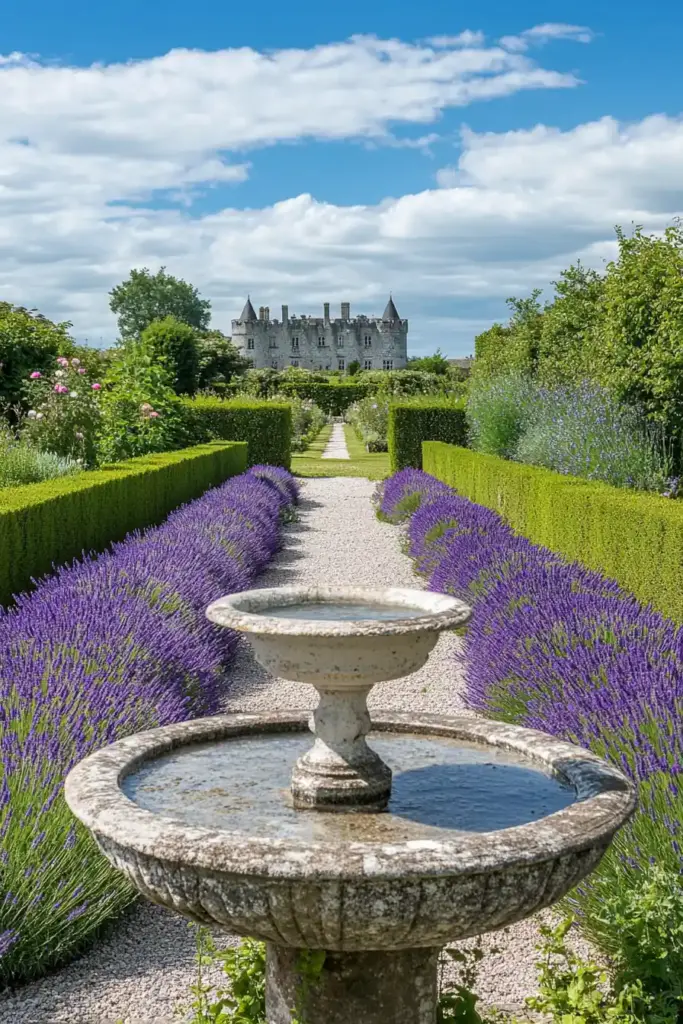Imagine stepping into your garden and being greeted by the soothing scent and soft purple hues of a lavender hedge. This beautiful, fragrant evergreen shrub is more than just eye candy — it’s a hard-working addition to any landscape. A mature lavender hedge typically grows between 1 and 2 feet tall, spreading out anywhere from 1 to 5 feet wide, depending on the variety. Thanks to its vibrant color, irresistible fragrance, and versatility, lavender makes an exceptional choice for creating low-maintenance, stunning garden borders.
12 Reasons to Plant a Lavender Hedge
1. Unique Shape
Lavender naturally forms neat, rounded mounds that create a tidy, sculpted look without much effort. A lavender hedge brings structure and softness to your garden all at once.
2. Exceptional Fragrance
Nothing beats the calming, sweet scent of lavender wafting through your outdoor space. Its perfume lingers in the air, making your garden a sensory haven.
3. Outstanding Color Variations
From classic violet and soft lilac to pale pink and even white, lavender offers a surprising range of hues to complement any landscape design.
4. Deer Tolerant
If deer tend to nibble through your garden, a lavender hedge can act as a natural deterrent. Its strong scent and bitter taste keep hungry visitors at bay.
5. Attracts Bees and Pollinators
Lavender blooms are a magnet for bees, butterflies, and beneficial insects. Planting a hedge helps support healthy ecosystems and boosts pollination for nearby plants.
6. Low Maintenance Once Established
After its first season, a lavender hedge practically takes care of itself. It thrives with minimal watering, needs little fertilization, and resists most pests and diseases.
7. Grows Well Near the Sea
Thanks to its love of sandy soils and tolerance for salty air, lavender grows beautifully in coastal gardens where other plants struggle.
8. Tolerates Rocky Soil
Lavender’s Mediterranean roots mean it’s perfectly adapted to gritty, rocky soils where drainage is quick and water doesn’t linger.
9. Withstands Moderate Drought
Once settled in, a lavender hedge can survive dry spells without missing a beat — a perfect choice for water-wise gardens.
10. Prevents Soil Erosion
Lavender’s dense roots anchor soil in place, making it an excellent hedge choice for slopes and areas prone to runoff.
11. Great for Dried Flower Crafts
The blooms dry easily and hold their fragrance for months, making lavender perfect for homemade wreaths, sachets, and potpourri.
12. Edible Varieties and Windbreak Benefits
Some lavender types are edible, adding a floral note to culinary creations. Plus, a thick lavender hedge can shield tender plants from harsh winds.
Best Lavender Varieties for a Hedge
Choosing the right variety is key to creating a lush, thriving lavender hedge. Here are three standout options to consider:
Lavandula angustifolia (English Lavender)
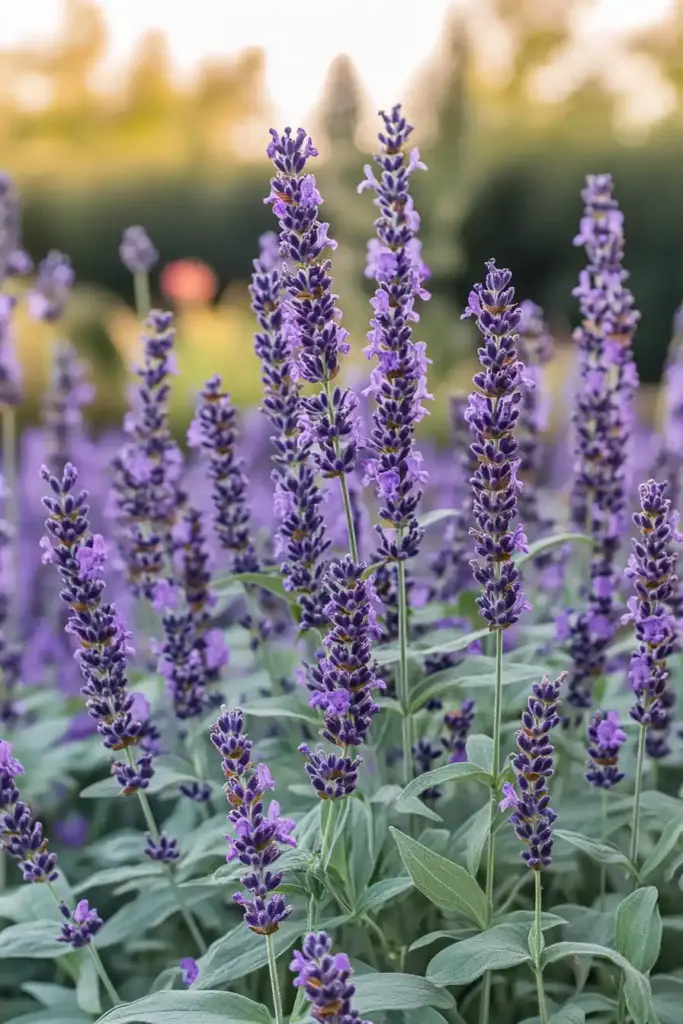
This classic variety is beloved for its compact shape, cold-hardiness, and rich fragrance. It’s ideal for neatly trimmed hedges and does particularly well in cooler climates.
Lavandula x intermedia (Lavandin)
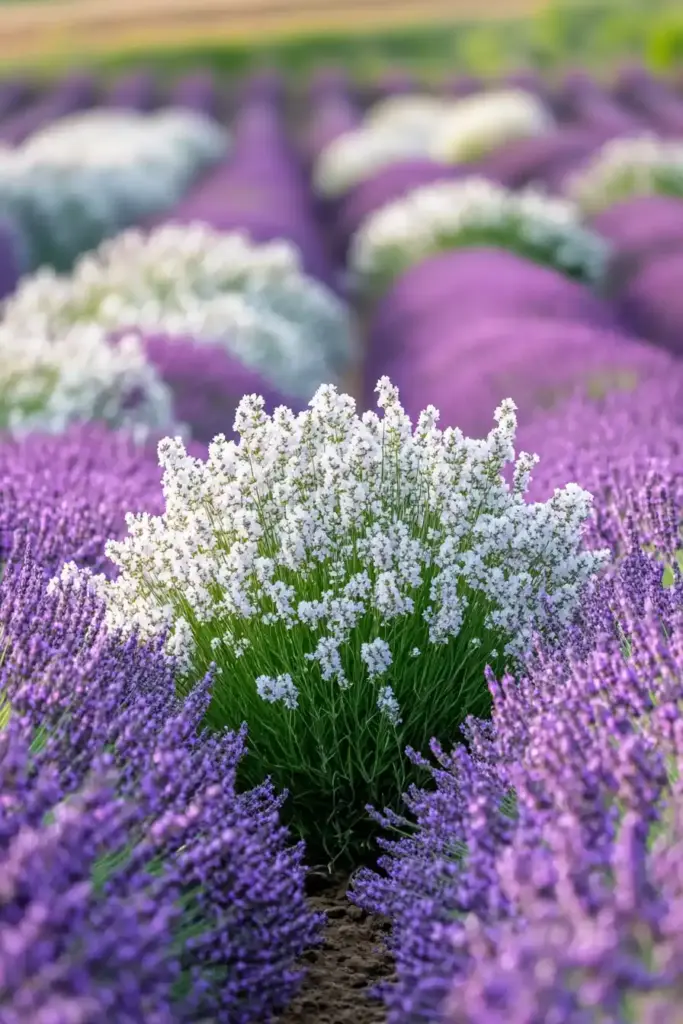
A hybrid between English and Portuguese lavender, Lavandin forms tall, dense mounds with long, graceful flower spikes. While it’s incredibly fragrant, it’s slightly less hardy in colder zones compared to English lavender.
Lavandula stoechas (Spanish or French Lavender)
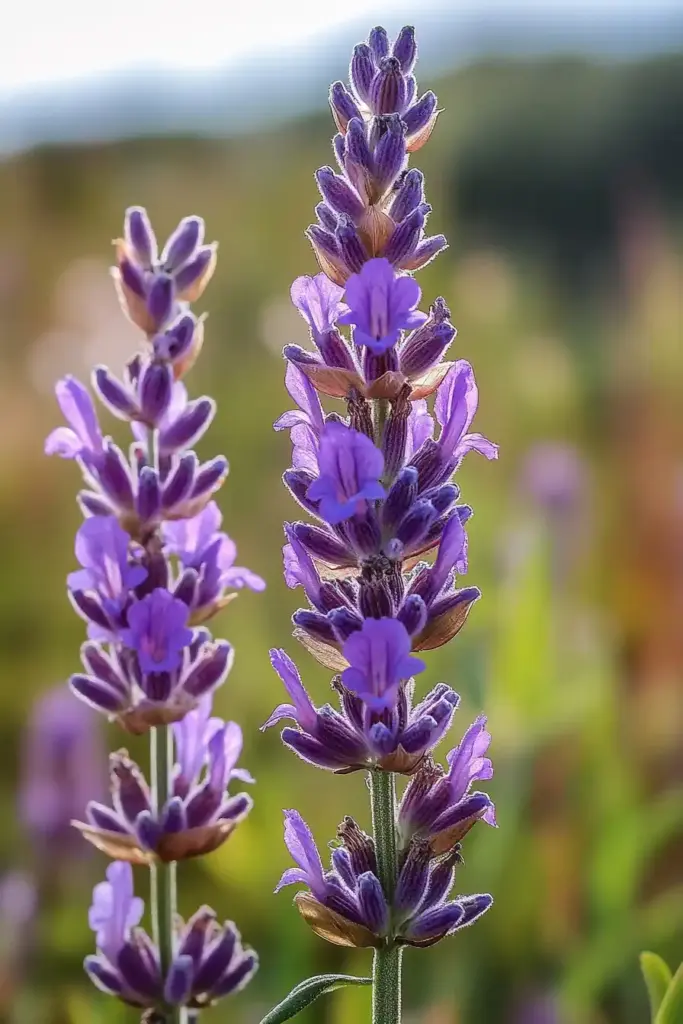
Recognizable by its “bunny ear” bracts atop the flowers, this variety thrives in hot, sunny conditions. Spanish lavender blooms over a longer season, making it perfect for gardeners seeking continuous color.
Steps to Grow a Lavender Hedge
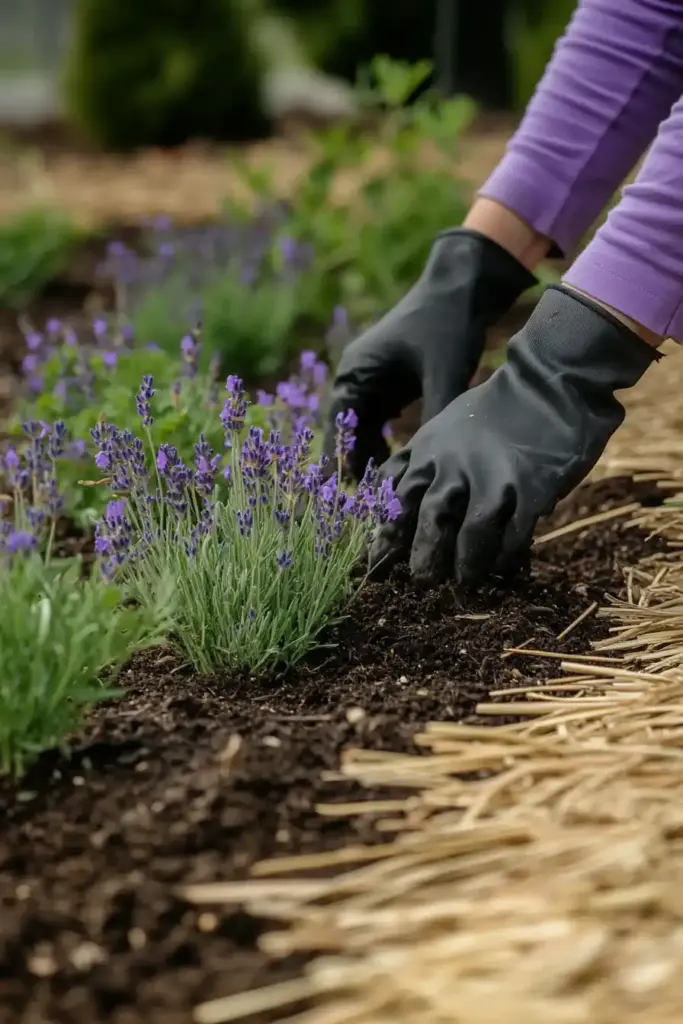
Pick the Right Location
Lavender loves the sun! Choose a spot that receives at least 6 hours of direct sunlight daily. A lavender hedge thrives best in USDA Hardiness Zones 5–9, where warm, sunny days help it flourish.
Soil pH Considerations
Aim for slightly alkaline to neutral soil, ideally with a pH between 6.4 and 8.3. If your soil is too acidic, you can easily adjust it by adding dolomite lime or garden lime to bring it into the optimal range.
Prepare the Site
Healthy roots start with healthy soil.
- Loosen the ground about 6–8 inches deep.
- Build a raised ridge or mound using a mix of topsoil and compost.
- This ensures excellent drainage, which is crucial since lavender hates soggy roots.
Planting Lavender
When you’re ready to plant:
- Gently loosen the roots of each lavender plant before placing it in the soil.
- Space plants about 10–12 inches apart to allow them room to grow without crowding.
- Water thoroughly after planting, and keep the soil lightly moist while the plants establish themselves.
Staggering Rows for a Denser Hedge
For a thicker, fuller lavender hedge, plant in two rows spaced 12 inches apart. Stagger the plants in a zigzag pattern — this trick fills in gaps and creates a lusher appearance faster.
Pruning Lavender
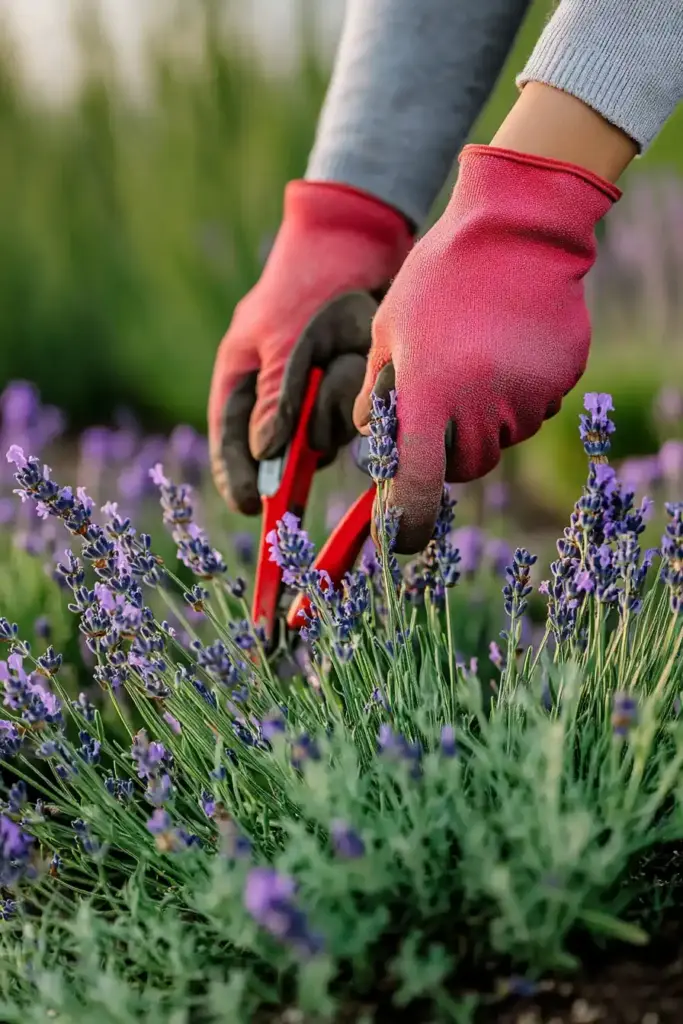
In early spring, prune back your lavender plants by about one-third.
This encourages bushier growth, helps maintain the hedge’s shape, and boosts flower production during the growing season.
Ensure Good Airflow
Proper spacing between plants isn’t just about growth — it also helps prevent problems like mold and mildew. Good air circulation keeps your lavender hedge healthy, strong, and beautiful year after year.
Frequently Asked Questions About Planting a Lavender Hedge
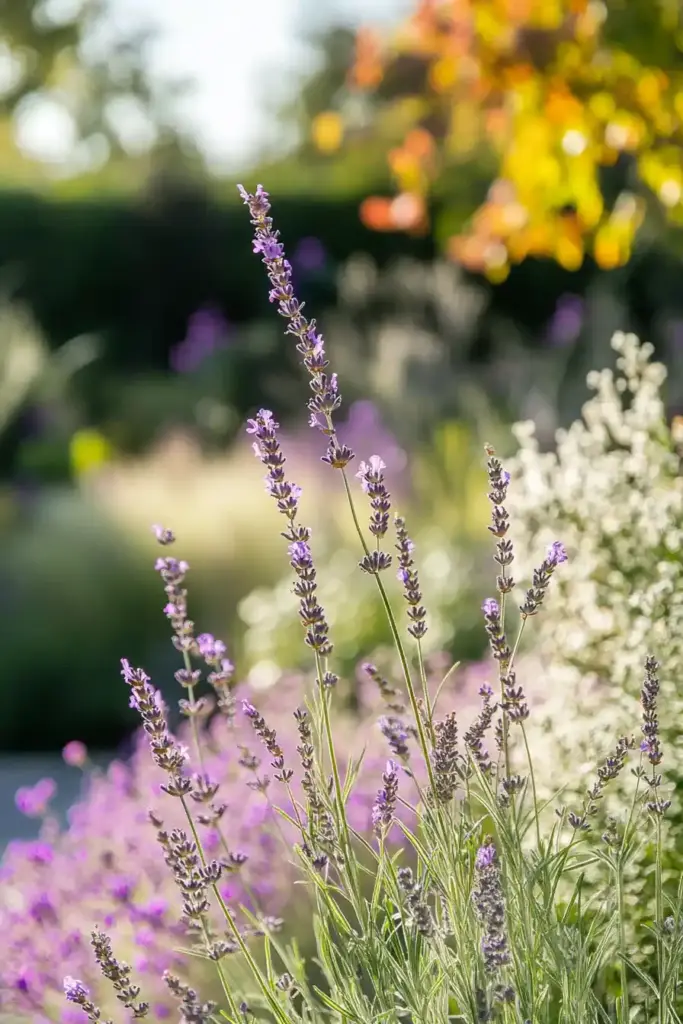
How long does it take for a lavender hedge to grow?
A lavender hedge typically takes about 1 to 2 years to fill in and become dense, depending on the variety, growing conditions, and care. Regular pruning can help speed up the thickening process.
What is the best time to plant a lavender hedge?
The best time to plant lavender is in the spring after the last frost, giving the plants a full growing season to establish strong roots before winter.
How far apart should I plant lavender for a hedge?
For a dense and full lavender hedge, space individual plants about 10–12 inches apart. If you want an even thicker hedge, consider staggering two rows 12 inches apart.
Can a lavender hedge survive winter?
Yes! Many varieties like Lavandula angustifolia are hardy and can survive winter temperatures, especially if planted in well-drained soil. In colder climates, mulching around the base can provide extra protection.
How do you maintain a lavender hedge?
Maintenance is simple:
- Prune once a year in early spring.
- Avoid overwatering — lavender prefers dry conditions.
- Ensure good airflow between plants to prevent disease.
Will a lavender hedge attract bees?
Absolutely! A blooming lavender hedge is a favorite among bees, butterflies, and other beneficial pollinators, making it a fantastic choice for eco-friendly gardens.
Conclusion
Planting a lavender hedge isn’t just about adding beauty to your garden — it’s about creating a living, breathing feature that offers fragrance, functionality, and year-round charm. Whether you want to attract pollinators, prevent soil erosion, or simply enjoy the peaceful scent of lavender on a warm day, this versatile plant delivers on every level. With the right location, soil preparation, and a little care, you’ll have a stunning lavender border that thrives for years to come.

